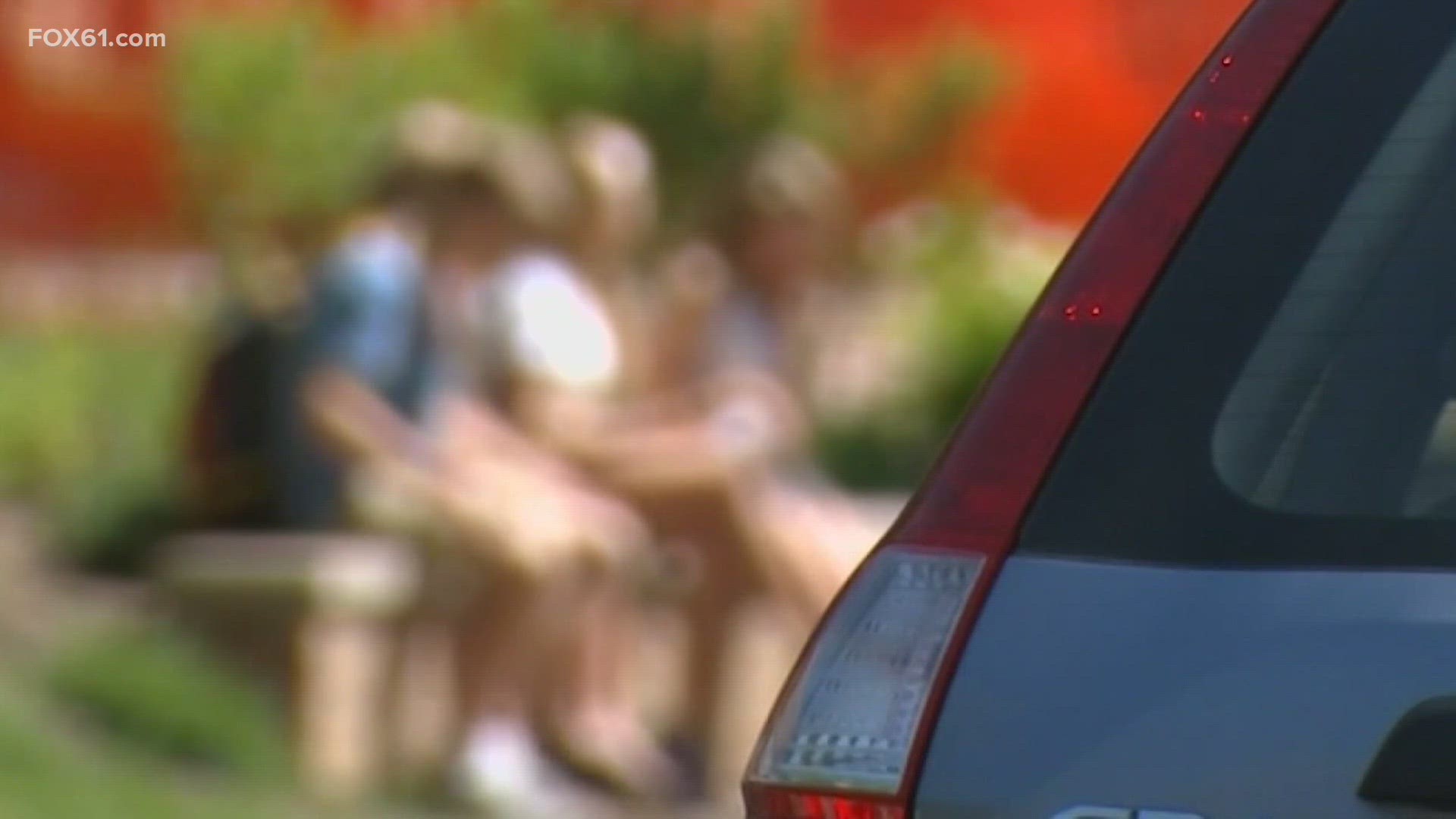There is a lot up for grabs Tuesday.
All 435 House races are on the ballot, with Democrats feeling optimistic about winning control of the chamber.
In the Senate, 35 seats are at stake, with Republicans positioned to hold — and possibly expand — the party’s slim majority.
And 36 gubernatorial contests will be decided, with Democrats looking to put a dent in the current 17-seat advantage for Republicans.
That doesn’t count the 6,066 state legislative races across 46 states and 158 ballot measures in 37 states.
With so much at stake, we here at CNN have identified 10 races that help explain the story of the 2018 midterms — and might offer hints about how things are likely to shake out on Election Night.
Kentucky’s 6th District: The Early Indicator
This Lexington-area district will be one of the first places we see votes on Election Night and could offer an early clue at just how energized Democrats are this year. Democrat Amy McGrath, a retired Marine fighter pilot, has given GOP Rep. Andy Barr a run for his money in a district President Donald Trump carried by 16 points. If Democrats are winning in places like eastern Kentucky, then Republicans could be in for a long night on Tuesday.
Virginia’s 7th District: Tea Party vs. The Resistance
Two-term Rep. Dave Brat stunned the political world in 2014 when he defeated House Majority Leader Eric Cantor in a GOP primary. Four years later, Brat could find himself on the losing end of another upset, facing a strong challenge from Abigail Spanberger, a former CIA operations officer. She is not running as a progressive firebrand, but just as Brat rode the Tea Party wave against Cantor, Spanberger could capitalize on the suburban backlash to the President in a traditionally Republican district.
New Jersey’s 7th District: The Trump Drag
Can a moderate Republican survive in a swing district where disapproval with the President is creating significant headwinds? That is the question confronting several GOP incumbents, including New Jersey Rep. Leonard Lance. The five-term incumbent broke with his party and voted against the Republican tax bill and the GOP’s 2017 effort to repeal and replace the Affordable Care Act. Despite those moves, Lance might not be able to escape the shadow cast by Trump and the GOP agenda. He faces a well-funded challenge from Democrat Tom Malinowski, a former State Department official, in a district Hillary Clinton carried by a single point.
California’s 45th District: Welcome to the O.C.
There are seven GOP-held seats in California that Hillary Clinton carried in 2016. They include the 45th District which is based entirely in Orange County and is a longtime Republican stronghold that’s become increasingly diverse. Mitt Romney won the district by 12 points, but it went for Clinton by five. GOP Rep. Mimi Walters is running against Democrat Katie Porter, a consumer protection lawyer and Elizabeth Warren protégée. A victory here by Porter, a progressive favorite who has endorsed single-payer health care, would send a signal of how far the politics of this area have moved.
Iowa’s 3rd District: Obama-Trump Turf
There’s been a lot of attention paid to the 25 GOP seats Clinton carried in 2016 — and rightfully so — but Democrats are also on offense in many of the dozen districts that swung from Barack Obama in 2012 to Trump four years later. Iowa’s 3rd District is a prime example. Obama twice won this southwestern Iowa district, home to the capital city of Des Moines, on his way to capturing the Hawkeye State during both of his presidential runs. Trump carried the district by three points as part of his nine-point victory in the state. Do voters in Iowa and other spots on the Obama-Trump map swing back to the Democrats? This contest features a matchup between two-term GOP Rep. David Young and Democrat Cindy Axne, a small business owner and first-time candidate.
Texas’ 7th District: The Swanky Suburbs
For Democrats, gaining the 23 seats needed to win control of the House will likely mean flipping several upscale suburban districts with large numbers of college graduates. Texas’ 7th District, home to the west Houston suburbs, fits that mold. This once solid Republican seat sent George H.W. Bush to Congress in 1966. But the changing demographics of the district — which became majority-minority after redistricting in 2011 — have turned it into one of the most competitive House races in the Lone Star State. Trump lost the district by a single point to Clinton, 48% to 47%, after Romney carried the district 60% to 39% four years earlier. Nearly $18 million has been spent on TV ads in the race between nine-term GOP Rep. John Culberson and Democrat Lizzie Pannill Fletcher, an attorney.
Georgia’s 6th District: The Wave Maker
For decades, Georgia’s 6th District has been solid Republican turf — electing Newt Gingrich and Tom Price to Congress — and voting for GOP presidential candidates such as Romney and John McCain by wide margins. Then Trump entered the picture. In 2016, Trump won the suburban Atlanta district by a single point. GOP Rep. Karen Handel scored a four-point victory in a fiercely-contested 2017 special election against Democrat Jon Ossoff. Now she faces a challenge from gun control activist Lucy McBath, whose son was shot and killed in 2012 after a dispute over loud music. If Democrats are winning districts like this one in Georgia, then the party should be in the majority come January with some room to spare.
Missouri Senate: A Red State Toss-Up
The Senate story this cycle has centered on the favorable map for Republicans with 10 Democratic incumbents running in states Trump won in 2016 — five of them by double digits. Democrats hold a very narrow path to the majority — one that almost certainly closes if Sen. Claire McCaskill is unable to hold on in Missouri. The two-term Democrat won her first race in 2006, a strong year for the party, and benefitted from a weak opponent in 2012. Polls in the Show Me State show the race is deadlocked. If McCaskill is able to defeat Republican Josh Hawley, the state’s attorney general, that would be a positive sign for other Red State Democrats such as Joe Donnelly in Indiana, Jon Tester in Montana and Joe Manchin in West Virginia.
Nevada Senate: A Test of the Health Care Argument
Health care has been the dominant message for Democrats this cycle — mentioned in more than half the party’s TV ads. In Nevada, Democrats have made every effort to ensure voters in the Silver State remember GOP Sen. Dean Heller’s shifting stances on the repeal of the Affordable Care Act. Heller initially opposed GOP proposals to dismantle Obamacare, only to vote in favor of the so-called “skinny repeal” measure that failed in the Senate. The campaign of Democratic Rep. Jacky Rosen has run TV ads featuring a clip of the President pressing Heller on health care to suggest the senator bowed to political pressure when he voted for the GOP plan. A recent CNN poll found health care was the top issue for 28% of likely voters in Nevada, followed closely by immigration at 26%. But it was the number one issue for 49% of likely Democratic voters. For Democrats such as Rosen who are in razor-thin races, the potency of the health care argument could be crucial to their chances.
Florida Governor: The 2020 Teaser
The race for governor in the Sunshine State is one of the marquee races of the cycle. In the short-term, it’s a battle of political bases with progressive Democrat Andrew Gillum, the mayor of Tallahassee, facing off against former Rep. Ron DeSantis, who won the GOP primary by aligning himself closely with President Trump. That’s reason enough to keep a close eye on this race. But there are massive implications for 2020, with Democrats in the midst of a debate between the progressive and moderate wings of the party. A Gillum victory in the biggest presidential battleground prize would give the progressive wing an added jolt as the early 2020 jockeying begins in earnest.



